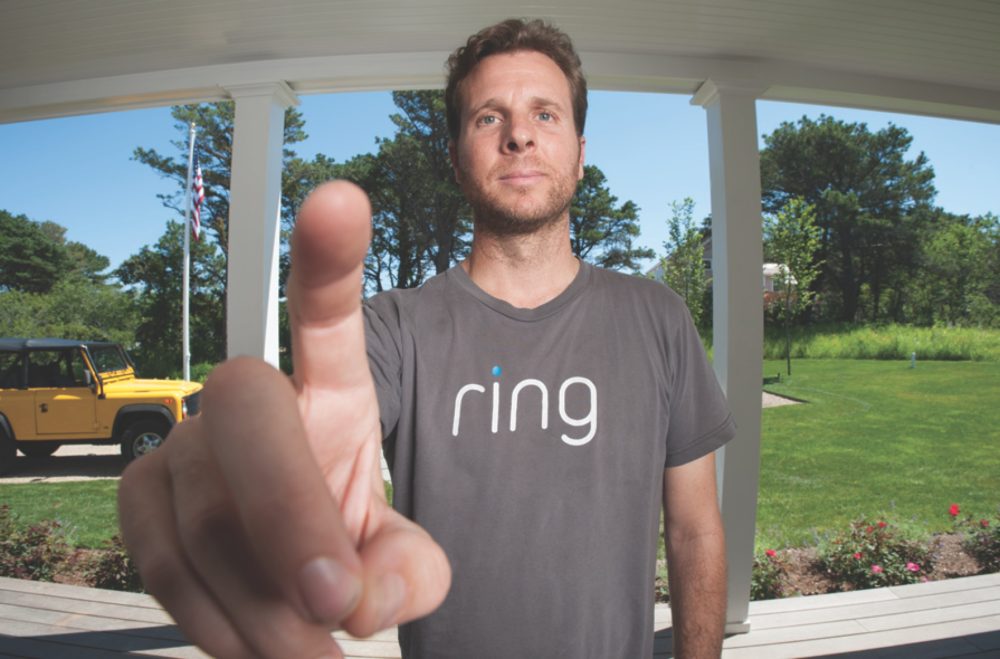It’s 3:00 PM on a Wednesday at your nonprofit. After a long, hard day of phone calls with your board of directors and your main funder’s portfolio manager, you finally have a couple precious hours to do some of the programmatic work you were originally hired on for.
You sit down at a PC that was built during the Bush administration (which one? You’re afraid to ask), crack your knuckles, and get ready to work…and that’s when your panicked development director stumbles toward your desk, arms full of pamphlets, begging you to help him stuff the three hundred giving campaign envelopes that have to be posted tonight.
Outside your job description? Completely. But there really isn’t any budget to hire an assistant. Plus, you’ve got a can-do attitude and a high tolerance for paper cuts. And so, ninety minutes later, you pack both director and envelopes into the one company car that still has working turn signals. You say a short prayer as the director burns rubber on his way out of the parking lot, hoping to make it to the post office before it closes.
While you’ve lost some time, you think you can still get a good chunk of your real work done before heading home. You go back inside your old Brutalist office building to get started—and that’s when the rickety pink toilet down the hall decides to spring a leak.
Now, this is also outside of your job description. But again, your funders aren’t really interested in paying for indirect costs like “professional” plumbers. And besides, papa didn’t raise no fool when it comes to basic pipe-fitting. So you grab the wrench set you and your teammates keep under the sink for these sorts of emergencies, get down on the floor, and start cranking.
And that’s when the rats come back.
Project Grants and Starvation Cycles
If you work in the nonprofit world, you know first-hand that juggling roles and responsibilities is part of the job. You also know that this is largely due to the flat-out bonkers funding practices that are standard in much of the nonprofit sector.
In brief: many funders, wanting to get the most bang for their buck, decided long ago that they only wanted to pay for a nonprofit’s “direct” costs—the activities or resources associated entirely with providing goods or services to people in need.
By definition, this involves skimping on—or completely avoiding—the nonprofit’s “indirect” costs or “overhead.” This would be anything that supports nonprofit employees in their work, but isn’t necessarily a core part of that work: office space, tech upgrades, marketing, training, etc. To accomplish this, such funders may provide grants that are earmarked only for certain projects, rather than offer unrestricted funding for grantees to use as they see fit.
Well-intentioned as this push for efficiency might be, it inevitably drags both nonprofits and funders into a vicious cycle—a “starvation cycle,” to be precise.
Nonprofit organizations, not wanting to scare off current and future funders, underestimate and fudge their own indirect costs, sometimes even colluding with sympathetic portfolio managers to reclassify certain indirect costs as direct program costs. Funders, in turn, get a distorted idea of the amount of money it takes to actually run a sustainable nonprofit, and may begin reducing the size of their grants even further. Nonprofit employees squeeze themselves harder and harder to prove they can do more with less, often shouldering responsibilities that have little to do with their official roles in the organization and doing additional work after hours.
This nasty pattern can repeat itself and get worse over time, resulting in overworked nonprofit employees, suspicious funders, and underserved clients.
Breaking the Cycle
Thankfully, nonprofit funding doesn’t have to stay this way forever. While it will take a lot of work from everyone in the ecosystem—and especially from funders, who hold disproportionate power over their grantees—we can create support structures that give nonprofits the flexibility and resources they need to be effective, and assure funders that their grants are going to great use.
Nonprofit employees can help that process along—and encourage funders to cover the indirect costs that are vital to their sustainable success—by explaining the situation in a way that is tailored to their particular values.
In other words, think of your funder as an audience whose behavior you’re trying to change, and tell the story that will convince that particular audience.
How you frame that story will vary from funder to funder, depending on what makes them tick. One of the most important factors to think about is whether a given funder makes decisions to pursue new opportunities or to avoid risks.
Promotion vs. Prevention
As researchers Heidi Grant Halvorson and E. Tory Higgins point out in the Harvard Business Review, people can be broadly divided into two groups, based on whether they are motivated to take risks in pursuit of big returns or preserve the status quo to keep things running smoothly. They refer to these two groups as promotion-focused and prevention-focused, respectively.
Promotion-focused individuals aren’t afraid of breaking a few eggs on the way to a killer omelet. They have a high tolerance for risk, perform better when their good work is praised, and are highly motivated by the thought of gaining rewards. By contrast, the prevention-focused do everything they can to minimize risk, perform best when cautioned ahead of time about potential mistakes, and are highly motivated to prevent errors.
Obviously, a single story isn’t going to motivate both of these audiences at the same time. An emotion-filled, inspirational speech aimed at promotion-focused people, for instance, will leave practical-minded preventers rolling their eyes. Likewise, a training video full of warnings about the dangers of deviating from a standardized process will leave promotion-focused people feeling stifled and nervous.
And just as managers can get better results by delivering their advice in a way that takes their employees’ motivations into account, so too will nonprofits have a better shot at breaking the starvation cycle if they can tailor the case for full-cost grantmaking to the needs of particular funders.
Motivating Funders
Certain promotion-focused funders, for instance, may be naturally excited by the idea of trying new things, but might need your help to envision the ways in which unrestricted funding can dramatically improve the lives of the people your nonprofit serves.
This is the time to bring out your inner Tony Robbins. When speaking to a funder like this, your job is to paint a picture of the future—to make the benefits of a new approach as mouth-watering to your funder as they already are to you.
| Pictured: A promotion-focused funder, enticed by your irresistible story. |
Prevention-focused funders, on the other hand, may be harder to convince. Because these individuals care more about avoiding problems than making gains, framing full-cost grantmaking as an innovative new approach to funding isn’t going to help your case, and may even scare off funders who are afraid of rocking the boat!
Instead, when speaking to a funder like this, you’ll want to highlight the ways in which full-cost grants are, in some ways, already becoming part of the status quo (more on that in a moment). For best results, you'll want to gently point out what funders could miss out on by not adopting the practice.
| When dealing with the prevention-focused, prophesize doom as necessary. |
Luckily, some of that work has already been done for you.
In recent years, many forward-thinking funders have caught on to the idea that paying for overhead allows nonprofits to do their best work, increasing the funder’s overall impact on society. The presidents of the Ford, Hewlett, MacArthur, Open Society, and Packard Foundations, for instance, have already committed to changing their grantmaking practices to help cover grantees’ indirect costs. What’s more, third-party organizations such as GuideStar, Charity Navigator, and the Wise Giving Alliance have already called on funders to stop evaluating nonprofits purely on the basis of their overhead costs.
In other words, the nonprofit sector is already changing.
By updating their grantmaking practices, your prevention-focused funder can keep themselves from falling behind the industry’s best practices—and avoid putting themselves at risk for a lower reputation among peers and potential partners.
Fighting for Full Cost
Now, it’s one thing for us to recommend that nonprofits advocate for their full operating costs—and quite another for you to open up a conversation you may have been (justifiably) avoiding for years.
As we touched on earlier in this post, the power imbalance between funders and grantees is, unfortunately, very real, and has an undeniable impact on communication. Depending on how deep in the starvation cycle you and your funder are, raising the issue of full cost may reveal an awkward gap between the way things have been done and the way they ought to be.
And even once the issue is finally out in the open, you probably won’t solve it in a single, Hollywood-style moment during which your funder finally sees the light and cuts you a blank check to fulfill your wildest philanthropic dreams.
Instead, prepare for an ongoing conversation with your funder as they adjust to a more accurate picture of what it takes to run a sustainable nonprofit—and be ready to help them deal with a bit of sticker shock.
| Pictured: A blissfully ignorant funder learns about a nonprofit’s actual IT costs. |
On the flip-side, if you happen to be a funder thinking about how to start this process with your grantees:
- Thank you for saving the world, and
- Have patience. The nonprofits you work with are used to operating in a system that penalizes them for being up-front about their indirect costs. Indeed, they may have so internalized the penny-pinching, “get it done” approach to nonprofit work that they don’t actually know what their real indirect costs are! It’ll take time to build up trust with organizations that have been burned for their transparency before. Make your commitment to your grantees clear, again and again, and eventually you’ll get a fuller picture of what’s actually going on, and how you can help.
Change won’t come easily, or quickly. But with dedication, honesty, and trust, we can all work toward a world where nonprofit organizations have the resources they need to serve their clients—and give their employees the resources and compensation they deserve.

-1.png)


